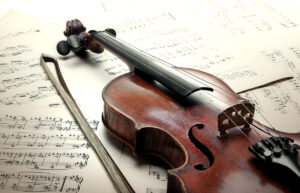How To Play Flute? Tips & Techniques

The flute is one of the oldest known musical instruments. Paleolithic flutes with hand-bored holes are the earliest identifiable musical instruments, dating back to about 53,000 to 45,000 years ago. The flute is a popular woodwind instrument that has been a part of various musical traditions worldwide.
Learning how to play the flute can allow you to explore new musical instruments and develop a unique skill. In this guide, we will cover important steps and techniques that beginners need to know when learning how to play flute.
Welcome to TheDemoStop, now join the community!
Connect with artists, fans and producers around the world.
What Is the Flute?
The flute is a reedle How to Play Flute woodwind instrument that produces sound when a stream of air is directed into the embobouchure hole. It has a cylindrical body with series of tone holes and keys. The flute is available in various materials, such as metal or wood, with the most common being silver or nickel plated C flute.
How to play flute?
Here are the steps to get you started on learning how to play flute:
1: Choose a Flute
- The first step is to select a suitable flute. For beginners, it is recommended to start with a student level instrument, such as a closed hole flute.
- The type of material a flute is made from impacts how it sounds when played. Most basic flutes have an outer layer of either silver or nickel.
- Flutes made entirely of pure silver are considered high-quality. If you want to buy a really good flute, a pure silver one is the best option.
2: Assemble (and disassemble) the flute
- Before mastering how to play flute, you need to learn how to properly assemble and disassemble it.
- Hold the foot joint and body joint of the flute and slide them together while being careful not to grip the keys.
- Next, hold the head joint and body joint and join them by sliding them together. Again, avoid gripping the keys during this step.
3: Tune the instrument
- Tuning your flute is necessary for getting the notes right and playing in harmony with other musicians.
- To tune your flute, check that the cork is centered: Thereafter, raise the flutes pitch by shortening the headjoint or lower the pitch by lengthening it.
4: Learn proper hand and arm placement
- Learning the correct hand and arm positioning is important when learning how to play the flute efficiently to avoid strain or injury.
- Your right hand should support the lower portion of the flute.
- Position your index, middle, and ring fingers on the last three keys of the flute body.
- Place your pinky finger on the first key of the flute foot joint.
- Use your right hand to control the keys at the end of the flute. Your right thumb should be underneath, providing support just below where your index finger rests.
- Hold the flute parallel to the floor.
5: Practice correct embouchure
- The embouchure, or the way you position your lips and mouth, is the most important aspect of flute playing.
- See that the embouchure hole is positioned right in the middle under your lower lip.
- Purse the corners of your mouth inward while keeping your lips smooth and relaxed.
- Blow a stream of air from the center of your lips, directing it toward the embouchure hole.
- To produce short staccato notes, move your tongue back and forth.
- Adjust the speed of your airstream to change the pitch of the note you are playing.
6: Read music
Being able to read music is important for learning how to play flute. Thus, familiarize yourself with musical notations, including notes and rhythms.
Welcome to TheDemoStop, now join the community!
Connect with artists, fans and producers around the world.
7: Practice regularly
- Consistent practice is the key to mastering how to play flute.
- Set aside time each day to work on your technique, tone production, and repertoire.
- Start with short practice sessions and gradually increase the duration as you finally learn how to play flute.
Conclusion
What is the flute?
The flute is a reedless woodwind instrument that produces sound when a stream of air is directed into the embouchure hole.
How to play flute?
1: Choose a Flute
2: Assemble (and disassemble) the flute
3: Tune the instrument
4: Learn proper hand and arm placement
5: Practice correct embouchure
6: Read music
7: Practice regularly
FAQs
What is the flute?
The flute is a reedless woodwind instrument that produces sound when a stream of air is directed into the embouchure hole.
How to play the flute?
To play the flute, you need to follow these steps:
- Choose a suitable flute
- Assemble and disassemble the instrument properly
- Tune the flute
- Learn correct hand and arm placement
- Practice proper embouchure
- Read music
- Practice regularly
Can I teach myself the flute?
You can teach yourself the basics of flute playing through online resources and self study materials. But it is highly recommended to seek guidance from an experienced instructor. A qualified teacher can provide personalized feedback, correct any technical issues and help you develop proper techniques from the beginning.
Is it easy to learn the flute?
The flute is generally considered one of the more easier woodwind instruments to learn for beginners. The flute’s fingering system is relatively straightforward, and the embouchure is less complex compared to reed instruments.
What is the easiest song to play on the flute?
Some of the easiest songs for beginners to learn on the flute include “Hot Cross Buns,” “Mary Had a Little Lamb,” and “Twinkle, Twinkle, Little Star.”
How long does it take to learn the flute?
With consistent practice and guidance from an instructor, beginners can typically learn the basics and start learn how to play the flute within 3 to 6 months.








































